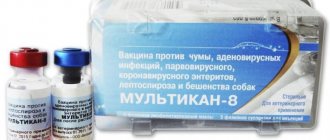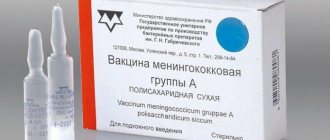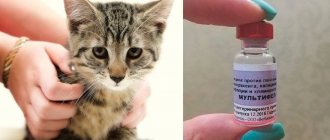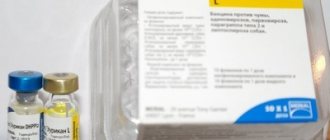Meningitis, otitis media, pneumonia, acute respiratory viral infections, bronchitis, sinusitis are only a small part of the diseases caused by pneumococcal bacteria. According to scientific research, more than 1.5 million people die annually from complications of such pathologies. There is only one way to protect yourself - timely immunization. Let's look at how the Pneumovax 23 vaccine works and how to vaccinate it correctly.
Composition and pharmacological action
The vaccine is polyvalent and contains highly purified capsular polysaccharides from 23 serotypes of Streptococcus pneumoniae. Excipients: sodium chloride, phenol, water for injection. Main purpose: prevention of pneumococcal infections.
Vaccine Pneumovax 23
The vaccine covers about 90% of the invasive serotypes existing in the world, including the most common in Russia: 3, 6B, 14, 19F and 23F. Laboratory studies confirm that after the vaccine is administered, immune cells recognize foreign objects and form specific antibodies.
After this, the antigen is eliminated from the body. This is how an immunological memory is formed, which, when a real pathogenic microorganism enters, easily recognizes it, preventing the disease from developing.
In recent years, there has been a steady increase in the resistance of pneumococci to drug therapy, so a vaccine against this group of infections is becoming mandatory even in those countries where it was not previously used as such.
Pneumo-23 and Prevenar: what is the difference in the composition of the vaccines
The name of the Pneumo-23 vaccine indicates the number of bacteria dangerous to humans, which are part of it. Of these, thirteen serotypes pose a threat to children's health, and another ten have been added to protect adults. In addition, the composition contains phenol for preservation and sodium phosphate. Essentially, it is a powder diluted with water for injection. The suspension is homogenized (brought into a uniform state) and supplied in disposable sterile syringes designed for one dose. The drug is a polysaccharide. In Russia, it has passed state registration and is included in the National Vaccination Calendar.
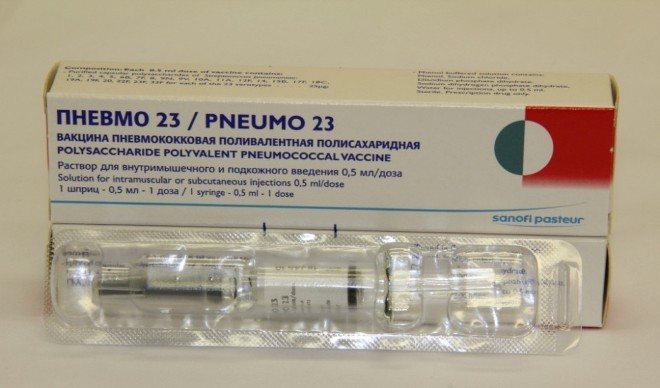
Prevenar comes in two types: to protect against seven types of bacteria and against thirteen. This is reflected in the names of the medications - Prevenar-7 and Prevenar-13. Domestic medical institutions mainly use an extended version of the drug. Prevenar is also a non-live vaccine containing a conjugated polysaccharide antigen. It also contains diphtheria protein, which provides longer-lasting and more effective protection. The release form is a white homogeneous suspension in disposable syringes designed for one dose.
Instructions for use of the vaccine Pneumovax 23
Only subcutaneous or intramuscular administration is allowed.

Rules of use:
- prepare a sterile disposable syringe;
- check the appearance of the vaccine (the packaging must be intact and the liquid itself must be transparent);
- open the bottle and take 0.5 ml of the immunological preparation;
- treat the injection site with an antiseptic (the lateral surface of the mid-thigh or deltoid muscle are the preferred injection sites);
- give an injection.
Within half an hour after administration there is a risk of anaphylactic shock and other severe reactions, so during this time it is recommended to remain in a medical facility under the supervision of a doctor.
Indications for vaccination "Pneumovax 23"
- Increased risk of developing pneumococcal disease, which is one of the leading causes of death worldwide and one of the leading causes of pneumonia, bacteremia, meningitis and otitis media in children over 2 years of age and in adults over 50 years of age.
- Children over 2 years of age who have chronic cardiovascular disease (including congestive heart failure and cardiomyopathy), chronic pulmonary disease (including chronic obstructive pulmonary disease and emphysema), or diabetes mellitus.
- Children over 2 years of age suffering from chronic liver disease (including cirrhosis) or leakage of cerebrospinal fluid.
- Children over 2 years of age with functional or anatomical asplenia (including sickle cell disease and splenectomy).
- Children over 2 years old living in special environmental conditions or special social conditions (including the peoples of the Far North).
- Children over 2 years of age with HIV infection, leukemia, lymphoma, Hodgkin's disease, multiple myeloma, advanced malignancy, chronic renal failure or nephrotic syndrome, persons receiving immunosuppressive chemotherapy (including corticosteroids), and recipients of bone marrow or transplantation organs.
- Routine vaccination of persons aged 50 years and older.
- People suffering from alcohol addiction.
- Persons with asymptomatic or clinically evident HIV infection should be vaccinated as soon as possible after diagnosis.
Contraindications for use
Do not vaccinate with the Pneumovax 23 vaccine in the following cases:

- cases of severe reaction or post-vaccination complications to a previous vaccination;
- age up to two years;
- any diseases and conditions accompanied by an increase in body temperature;
- individual intolerance to the components of the drug;
- serious diseases of the central nervous system accompanied by seizures.
Allergies are not an obstacle to vaccination, but before vaccination it is better to consult a doctor - he may recommend taking antihistamines.
Difference in mechanism of action
The Prevenar vaccine is characterized by the following features.
- Used to vaccinate children from two months to five years.
- Usually not prescribed for adults.
- Both types of the drug are administered intramuscularly into the thigh, and for children over two years old - under the shoulder blade.
- Introduction schedule:
- three times at monthly intervals, revaccination – from one to two years;
- at a later age - twice with revaccination every two years;
- after two years - once.
If the regimen is followed, the child develops immunity to pneumococcus with an effectiveness of 80-90%. The drug has undergone large-scale clinical tests in leading clinics in the USA and European countries.
The characteristics of Pneumo-23 are as follows.
- Can only be used from two years of age.
- It is administered intramuscularly or subcutaneously.
- Single vaccination.
Suitable for adults at risk for diseases caused by pneumococcus. This includes older people, patients with diabetes mellitus, HIV status, leukemia, low hemoglobin, diseases of the hepatobiliary and respiratory systems, including tuberculosis. The practice of vaccination with the described drug is common in closed groups: both adults (for example, in military units) and children (boarding schools, orphanages, and so on).
Immunization Pneumo provides immunity with an efficiency of up to 90%. It is formed within two weeks from the moment of injection and persists for five years.
Side effects and complications
In most cases, local reactions at the injection site occur on the third day and disappear on their own on the fifth.
Their manifestation: a surge of heat, soreness, induration, erythema, swelling, increased sensitivity. Myalgia, asthenia, headache, increased body temperature (not higher than 38.8 degrees) are common reactions that develop most often. In rare and exceptional cases, the following are possible: Quincke's edema, nausea, vomiting, febrile convulsions, rash, urticaria, arthritis, serum sickness and some other conditions.
Due to their rare nature, data on the frequency of occurrence in different age groups are not provided.
Risk group
The highest incidence of severe pneumococcal infections is recorded in children under 5 years of age. Young children under 2 years of age, whose bodies are unable to resist infections, are especially defenseless.
Risk groups also include adults with chronic diseases of the cardiovascular and respiratory systems, diabetes mellitus, liver cirrhosis, and chronic renal failure.
This should also include the so-called “organized” contingents - children attending kindergartens, students living in dormitories, military personnel, residents of nursing homes, prisoners and other children and adults living in “overcrowded” conditions.
Price and analogues of polyvalent vaccine against pneumococcal infection
Relatively recently, vaccination against pneumococcus became mandatory and was included in the Russian national immunization calendar, so now you can vaccinate a child for free, in a clinic at your place of residence.
However, due to certain circumstances, such an opportunity is not always available, so let’s look at the price of Pneumovax 23 and analogues.

Vaccine Prevenar
Average cost:
- Pneumovax 23 – 2400 rubles;
- Pneumo 23 – 2100 rubles;
- Prevenar – 1900 rubles.
The vaccine can be purchased strictly with a doctor's prescription.
Comparison of Pneumovax 23 and Pneumo 23: differences and which is better
The Pneumovax 23 and Pneumo 23 vaccines are similar because:

- both contain 23 serotypes of Streptococcus pneumoniae;
- recommended for use in children over 2 years of age, as well as in elderly patients;
- guarantee reliable protection for 5 years;
- in standard cases, revaccination is not required;
- used in dozens of European countries.
In Russia, the use of Pneumo 23 is officially recommended, since this vaccine was tested in our country and showed high efficiency.
Another advantage is that it comes in the form of an individual syringe dose, which greatly simplifies its administration. It is worth noting that another vaccine against the analyzed group of infections is presented in Russia, its name is Prevenar.
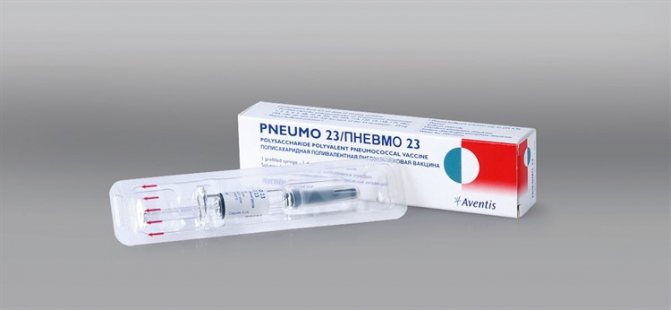
Vaccine Pneumo 23
Distinctive features of Prevenar (compared to Pneumovax 23):
- contains 13 serotypes of bacteria;
- approved for use in children from 2 months to five years;
- revaccination is required;
- can be administered on the same day with other vaccines (except BCG);
- the presence of a population effect has been proven;
- used in 90 countries (the most popular vaccine today).
The main advantage of Prevenar is that it is able to protect the most vulnerable group - that is, children under two years of age, in whom pneumococcus causes not only the disease itself, but also severe complications.
Prevenar or Pneumo 23: which is better?
Despite the fact that American colleagues have a negative attitude towards the Pneumo 23 vaccine, domestic immunologists continue to recommend it as a mandatory preventive measure to their patients.
The fact is that in children after six years of age and adults, the drug promotes the synthesis of a sufficient number of protective complexes, which are particularly durable. After such an injection, repeated vaccination is not necessary.
Experts advise revaccination only for people from risk groups, namely:

- elderly patients over 65 years of age with various concomitant diseases of internal organs, in whom even a mild infection can cause complications of the general condition and death;
- patients suffering from pulmonary tuberculosis and chronic pathologies of the respiratory system, liver cirrhosis, complex forms of neurological pathologies;
- people with immunodeficiency and HIV-infected patients;
- diabetics;
- patients with blood diseases.
According to the recommendations of specialists, it is better to administer this drug for specific medical indications, and not for personal reasons. It is advisable to use Pneumo 23 if a person is intolerant to Prevenar.
Prevenar 13 is a vaccine with a high level of confidence among both doctors and their patients. This drug is prescribed to infants starting from the age of two months. A distinctive feature of the vaccine is that it is perfectly absorbed, rarely provokes the development of side effects and reliably protects the body from pneumococci.
The vaccine is administered in several stages:
- at the age of 2 to 6 months, three doses of Prevenar 13 are required with an interval of a month and mandatory revaccination at 18 months;
- at the age of 7-11 months: double immunization with Prevenar at a monthly interval and revaccination at 24 months;
- at the age of 1-2 years, double vaccination is prescribed with an interval of 2 months (with no need for subsequent revaccinations);
- from the age of 2 years, the vaccine is administered once without revaccination.
When choosing a vaccine, its cost plays an important role. The price of Pneumo 23 is several times lower than the cost of Prevenar. Therefore, in most cases you have to stop at the first option.
Reviews about the effectiveness and tolerability of the vaccine
Since it is impossible to objectively assess the effectiveness of vaccination based on information provided by parents, we present data from the Ministry of Health.
After the inclusion of the pneumococcal vaccine in the national calendar children get sick less often:
- ARVI – 2 times;
- pneumonia – 6 times;
- bronchitis – 12 times.
Comparisons are provided between those who were vaccinated and those who did not receive the vaccine. As for complications, according to parents, they occur infrequently.
In rare cases, there is a slight increase in body temperature, which can be easily relieved by taking antipyretics, as well as local reactions at the injection site (redness, thickening, a flush of heat). According to studies by the vaccine manufacturer, post-vaccination complications are observed no more often than in 2% of cases.



